Are you looking for tips on how to decorate with mirrors in the living room? You’re in the right place. Mirrors enhance natural light and can make your space feel more open and polished.
Positioning mirrors across from windows or above seating brightens the room and creates the illusion of extra space. Plus, mirrors can act as striking focal points, drawing attention to your favourite views or artwork.
Choosing the right mirror shape, size, and frame is crucial. It should complement your existing textures and colour palette to create a cohesive, stylish design.
In this guide, you’ll learn where to place mirrors, which styles to choose, and what mistakes to avoid.
- Benefits of decorating with mirrors
- Popular mirror placement ideas
- Common mistakes to avoid
- How to choose the right mirror
- Step-by-step decorating guide
- Key takeaways
- FAQs
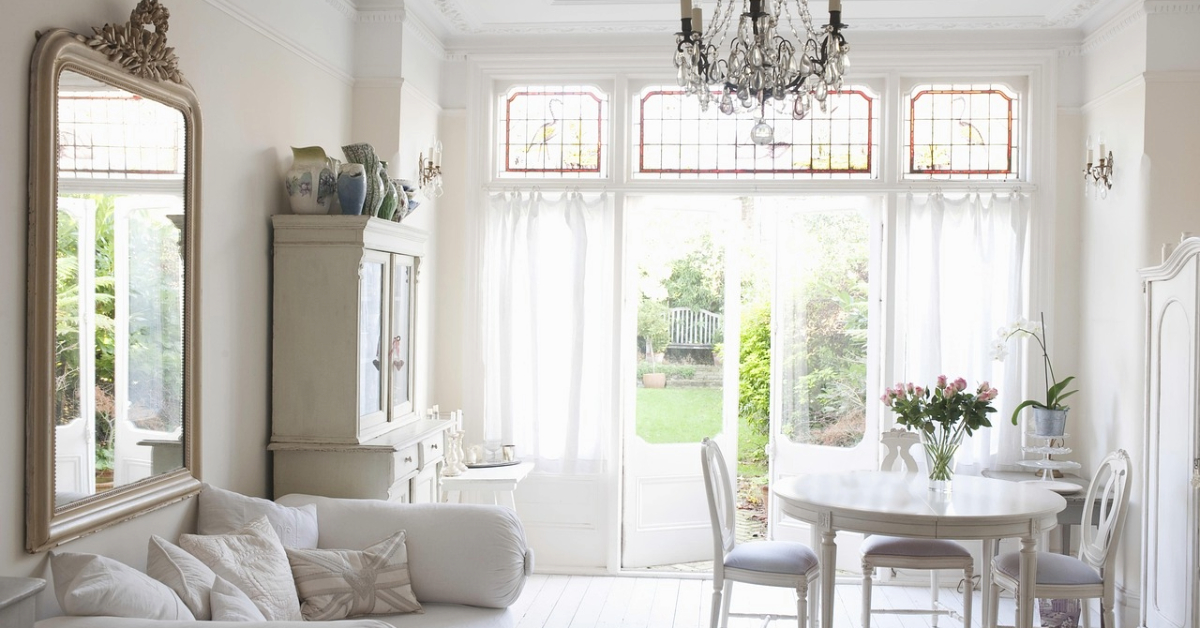
Benefits of decorating with mirrors
When you decorate your living room with mirrors, you’re doing more than just adding style. You’re introducing functionality. Mirrors reflect light, making your space feel warmer and brighter, especially when placed near windows. They soften harsh shadows and bring natural daylight deeper into the room.
Mirrors can be your best friend if you live in a smaller home or apartment. By reflecting light and space, they create the illusion of a larger, airier room.
Mirrors also serve as stunning decorative elements. A large, framed mirror can act as a bold centrepiece. And the right frame, be it wood, metal, or stone, can set the tone for your entire design.
Want to highlight certain features? Use mirrors to reflect artwork, flower arrangements, or scenic outdoor views. They help you direct attention exactly where you want it.
Popular mirror placement ideas
From entryways to bedrooms, there are plenty of creative ways to position mirrors for both style and function.
1. Make a statement with large mirrors
Oversized mirrors can instantly transform your living space. They will draw attention and add a sense of grandeur. Place large mirrors on expansive walls to make the most impact. They’re perfect for modern interiors seeking a clean, sophisticated touch.
You could also make a statement with a large handmade rattan mirror for your boho chic décor.
2. Above the sofa
Hanging a mirror above your sofa adds height and anchors your seating area. Just make sure it complements the couch in style and scale. An undersized mirror will disappear, while an oversized mirror might overshadow the furniture.
3. Above the mantel
A mantel mirror directs all attention to the fireplace, a natural focal point. Positioning one above the mantel draws the eye upward and gives the room a more vertical, spacious feel.
Proportion is also very important. The mirror must fit the mantel beautifully without appearing too narrow or too wide.
Stick to mirrors that match your décor. You can go for metal for a modern interior, carved wood or gold for traditional.
4. Mirror gallery walls
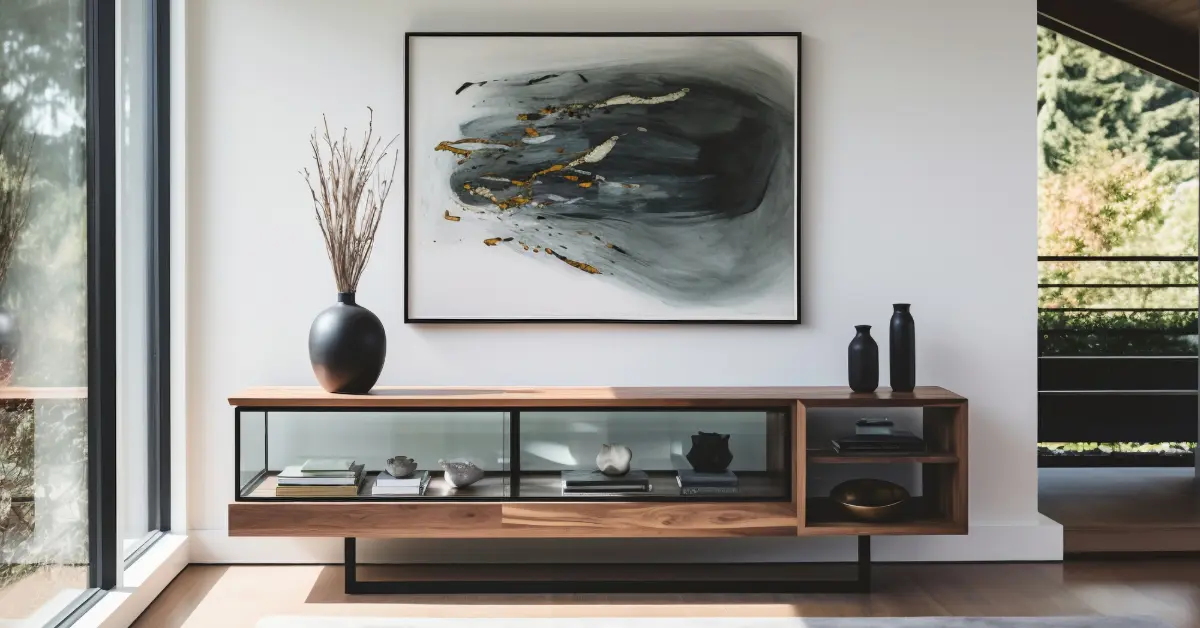
Mirrors can either augment or replace the artwork on a gallery wall. Mixing mirror shapes and sizes has an artistic effect.
However, too many smaller mirrors may look cluttered, and using only large mirrors will make everything look heavy. So, consider having a combination. It can help achieve harmony and make the arrangement visually appealing.
5. Full-length leaning mirrors
Leaning mirrors bring elegance and a relaxed vibe. They help balance tall ceilings and, when placed opposite windows, reflect more natural light.
For best results, avoid placing them where they’ll reflect clutter. Instead, position them to amplify natural beauty.
6. Geometrical mirrors
Want to add character? Try mirrors in unique shapes like hexagons, arches, or asymmetrical designs. Such mirrors add a modern twist and can refresh traditional designs.
These mirrors work as both art pieces and mirrors. Thus, they strike a balance between practicality and a solid decorative statement.
7. Antique and vintage mirrors
If your style is classic or eclectic, consider vintage mirrors. They offer charm and history and are suitable for classic living rooms.
Patina, aged glass, and ornate frames add texture and a timeless quality. Lighting complements vintage mirrors. Wall scones or lamps on either side amplify reflection and create a warm ambient light, making the room look refined and cosy.
8. Mirrored furniture
Mirrored furniture, such as side tables, coffee tables, or trays, adds a touch of shine and glamour. These reflective surfaces add depth to the room without being overpowering.
Consider pairing the mirrors with natural materials like woven textures or plants. These can soften the effect. Such a combination can balance elegance and comfort, creating a living room that feels stylish and welcoming.
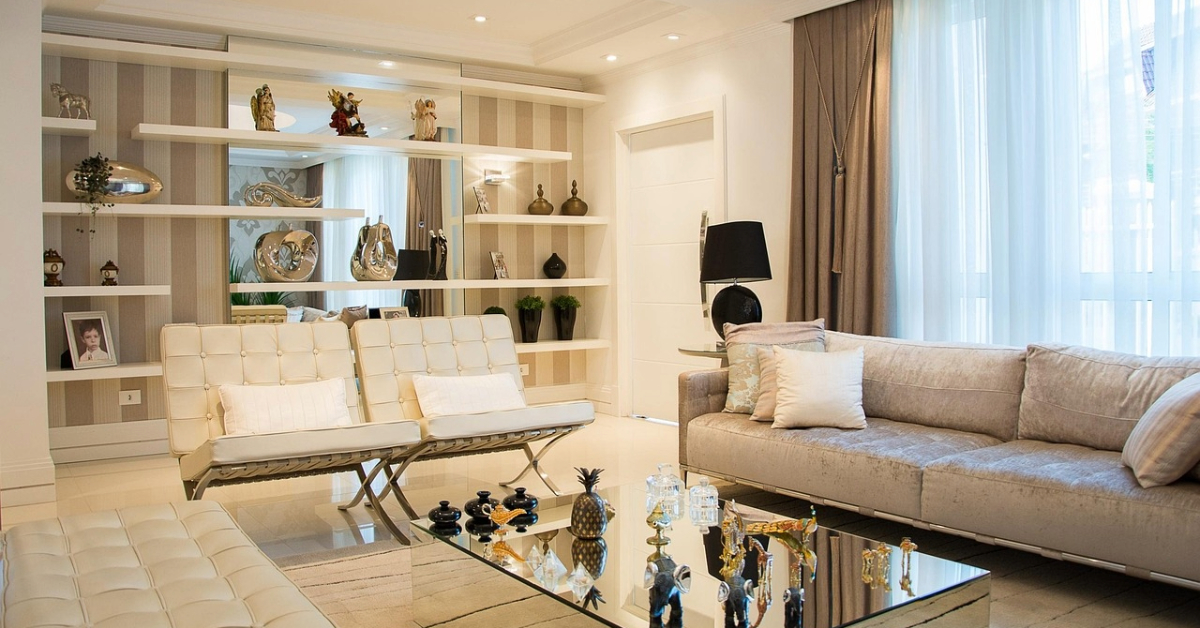
Common mistakes to avoid
While mirrors can elevate a room’s look, placing them incorrectly can have the opposite effect. Avoid these common mistakes to ensure your mirrors enhance your space rather than overwhelm it.
1. Ignoring scale and proportion
Choosing a mirror without considering scale can disrupt balance. An oversized mirror will take over a wall and distract from the furniture. In contrast, a small mirror will blend seamlessly into the background.
Pick a size that complements the surrounding elements. This will ensure visual harmony and give a polished result.
2. Overdoing it
Too many mirrors break up and fragment the space, creating chaos rather than elegance. Choose a few key pieces that serve both function and style.
3. Hanging too high or too low
Mirrors should be placed at eye level, at least 150 cm from the floor. When hung too high or too low, they can feel disconnected from the rest of the room.
4. Neglecting lighting
A mirror cannot fulfil its function without adequate light. So, always avoid harsh lighting or dark corners. These can create glare or reduce effectiveness. Arrange the mirrors to reflect soft or natural light. This will establish a welcoming and warm environment.
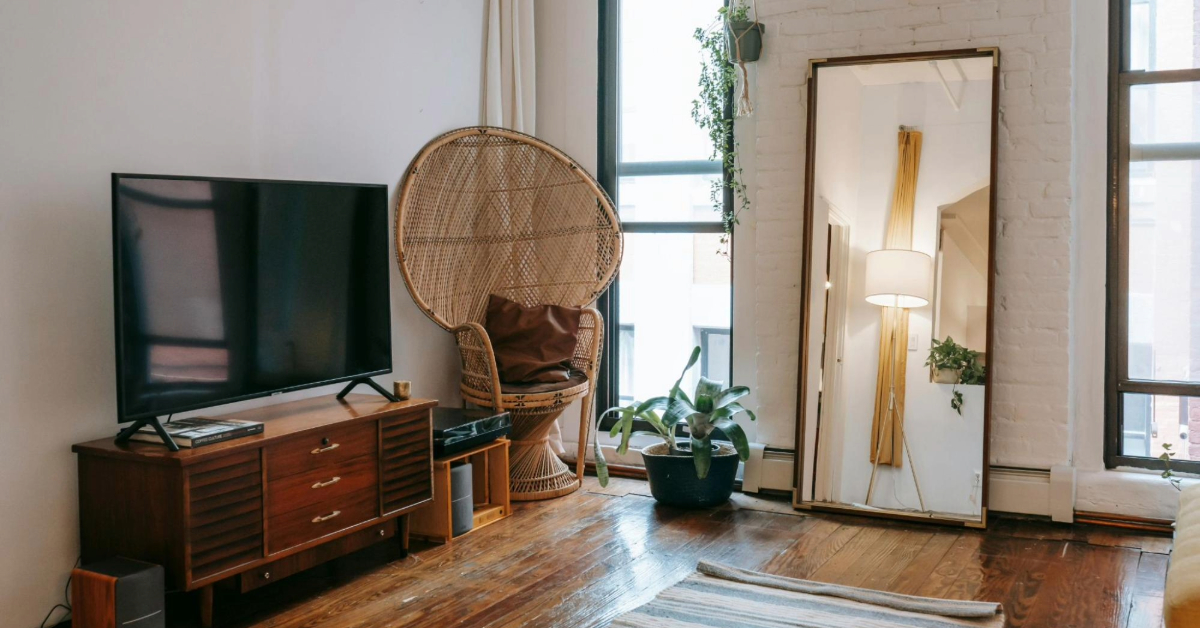
5. Reflecting clutter
Mirrors double whatever they reflect. Improperly placed mirrors can amplify clutter or unattractive areas. So, place the mirrors to reflect something beautiful, like art, plants, or a window. The correct placement will amplify visual appeal and add to the curated atmosphere.
6. Picking mismatched frames
Choose frames that complement your décor. A mismatched frame can throw off the entire look, while the right one enhances your room’s harmony. Always consider the complementary materials, colours, and finishes to ensure the mirror integrates beautifully.
7. Not layering or accessorising
A mirror alone may seem stark. So, consider surrounding it with decorative objects. Some good options are artworks, vases, or lamps. These items add depth and personality to the room.
How to choose the right mirror
Choosing the right mirror goes beyond just finding one that looks good; it’s about matching style, size, and placement to your space. The right choice can tie a room together and even make it feel more open and balanced.
1. Measure your space
Accurate measurement can help avoid undersized or oversized mirrors. So, before buying a mirror, you should measure your:
- Walls
- Furniture
- Surrounding décor
Measuring in advance can amplify the space without imbalance or installation issues.
2. Pick the right frame and shape
Frames determine how a mirror blends with the home décor. Clean lines suit modern homes, while ornate wood or gold frames are perfect for vintage-inspired spaces. Choose materials and finishes that match the existing décor to guarantee cohesion and harmony.
3. Know the mirror’s purpose
Assess whether the mirror is practical or decorative. Decorative mirrors emphasise visual impact, while practical mirrors help with lighting and appearance. Choose according to use to prevent mismatched expectations.
Step-by-step decorating guide
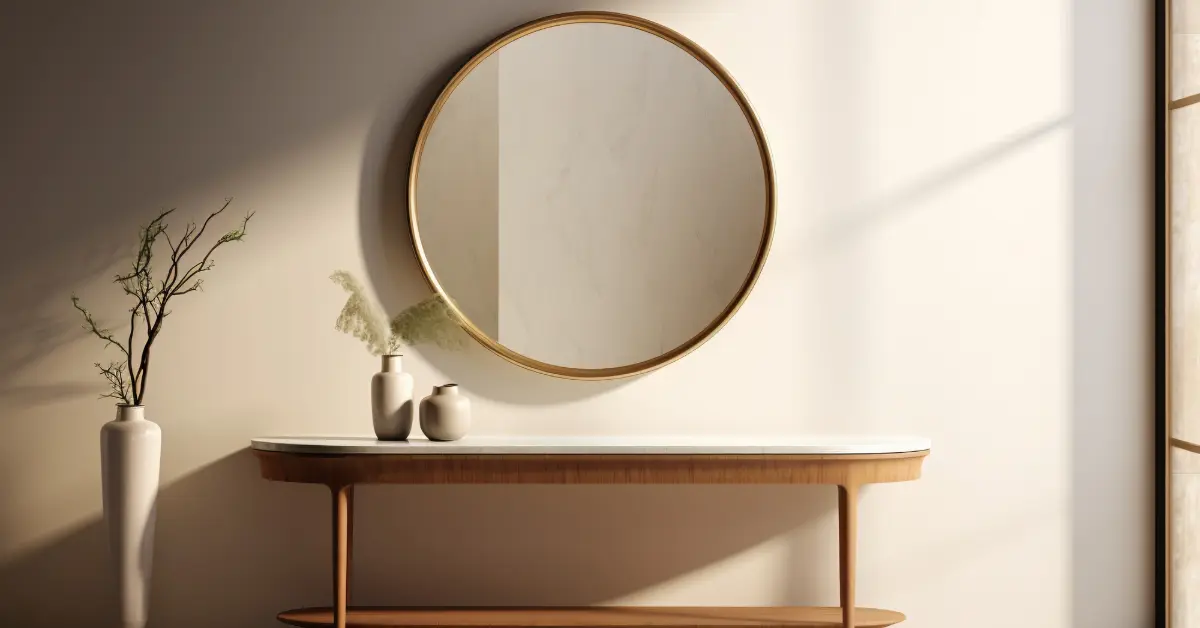
1. Decide on a focal point
Select a place where your mirror can take centre stage. It may be on the mantel, behind the sofa, or along a gallery wall. The proper placement will draw attention without overpowering the space. Surround it with complementary décor to add layers and depth.
2. Measure
Check the measurements carefully. The mirror must balance with the furniture and the size of the wall. Proper proportion prevents it from being overpowering or getting lost in the space.
3. Hang the mirror at eye level
Position the mirrors at least 150 cm from the floor. Adjust placement for specific furniture or mantels. This can boost practicality and aesthetics.
4. Reflect pleasing features
The mirror should reflect plants, artwork, or a window. Your placement must not highlight clutter. Position it opposite a natural light source for maximum brightness.
5. Layer with accessories
Mirrors should complement the décor. Layering enhances visual appeal and allows mirrors to be intentional focal points in the overall design. Surround the mirror with vases, lights or other décor to create depth.
6. Edit when necessary
Assess your arrangement. If the room feels overcrowded or chaotic, remove one or two mirrors to restore balance.
Key takeaways
Mirrors are a powerful tool in living room design, offering both style and functionality. When used thoughtfully, they enhance natural light, create the illusion of a larger space, and highlight your room’s best features.
To get the most out of your mirrors, focus on proper placement. Ideally, mirrors should be at eye level and reflect attractive elements like windows, plants, or artwork. Pay close attention to scale, ensuring each mirror complements the surrounding furniture and wall space. Choose frames and shapes that align with your décor style for a cohesive look, and avoid overcrowding the space with too many mirrors.
Finally, layer mirrors with accessories like lamps or artwork to create depth and turn them into intentional focal points.
FAQs
Do not place the mirrors in a place where they amplify harsh light or highlight the clutter or unappealing views.
Choose a mirror that is two-thirds the length of the sofa. This will help maintain balance and not overpower the space.
Yes. It will look good on the gallery walls. However, ensure a balanced mix of colour and size.
Yes. When well-placed, mirrors reflect light and provide the illusion of depth, making the space feel larger.
Consider hanging at eye level. A height of 150 cm from the floor is ideal.